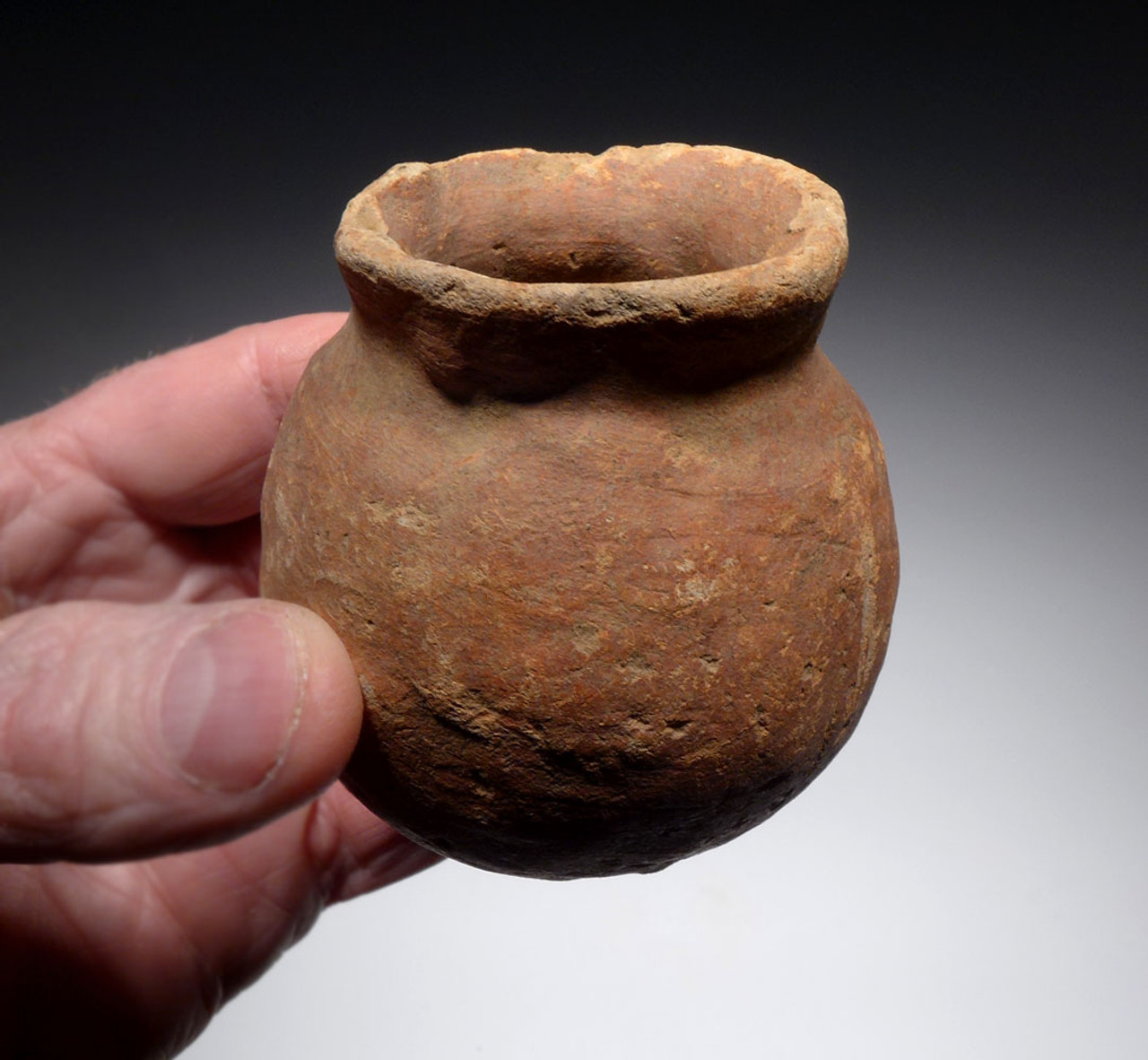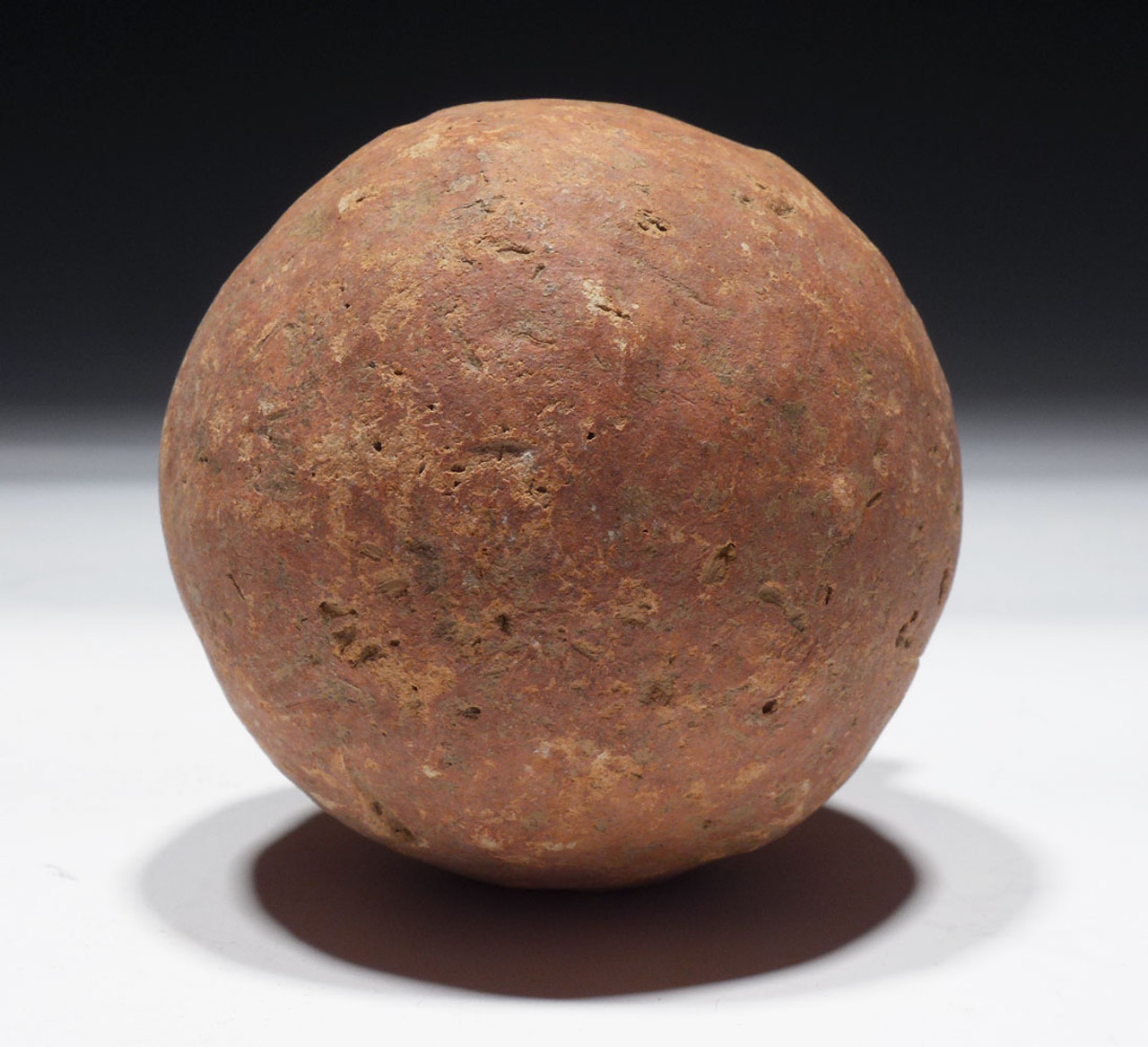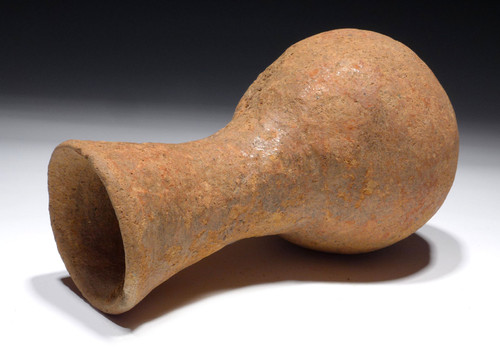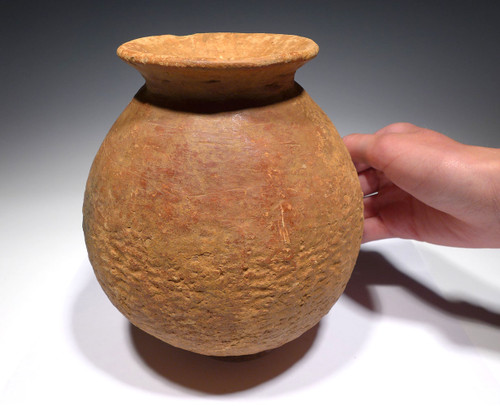Product Description
SEE MORE AFRICAN NEOLITHIC TOOLS AND ARTIFACTS
The Late Neolithic to Early Iron Age ceramics of the West Sahel are some of the rarest ancient pottery one could own. Our fortunate purchase of a very small private U.S. collection in 2005 allows us the exclusive opportunity to make a few of these ultra-rare pieces available for sale.
This is a terracotta small wide rim globular vessel in amazing, UNBROKEN condition. It is complete with a round base and wide-mouthed rim. Red slip finish is still intact.
Compared to the thousands and thousands of African Neolithic stone tools available for sale on the market, you will be hard-pressed to find a single authentic example of this rare pottery available for purchase. The few we acquired from this single private collection are all we will offer and once sold, we will never again have such an opportunity. Hundreds of thousands of examples of Roman and Greek pottery exist for every one of these rare African Neolithic ceramics.
This would make a museum-class display piece to accompany African Neolithic stone tools and other artifacts as pottery was the first product of the transition from the Stone Age to the farming societies of the Neolithic. Transitory populations of hunters and gatherers now could farm their food and settle into communities. Pottery was the result of needing storage for excess resource production afforded by this new form of lifestyle.
HISTORY
The Sahel is a region of Africa between the barren Sahara desert to the north and the wetter and more fertile tropical area to the south. It is a semi-arid 3,860-kilometre arc-like land mass lying to the immediate south of the Sahara Desert and stretching east-west across the width of the African continent. The modern geographic area stretches from Senegal on the Atlantic coast, through parts of Mauritania, Mali, Burkina Faso, Niger, Nigeria, Chad and Sudan, to Eritrea on the Red Sea coast.
Prior to the fifth millennium BC, the region was a fertile and temperate area conducive to Neolithic farming and home to Late Stone Age societies. Global warming and climate change around 4000 BC, caused the Sahara and the Sahel to become drier at an exceedingly fast pace. Formerly a rich lake region, the lakes and rivers began to die and shrink, accelerating a devastating process desertification. The land no longer would support human life and it caused the eventual migration and end of numerous Neolithic and ancient societies. Migrations of farming communities led to the increase of populations to the more humid climate of West Africa.
 US DOLLAR
US DOLLAR
 EURO
EURO
 AUSTRALIAN DOLLAR
AUSTRALIAN DOLLAR
 CANADIAN DOLLAR
CANADIAN DOLLAR
 POUND STERLING
POUND STERLING














